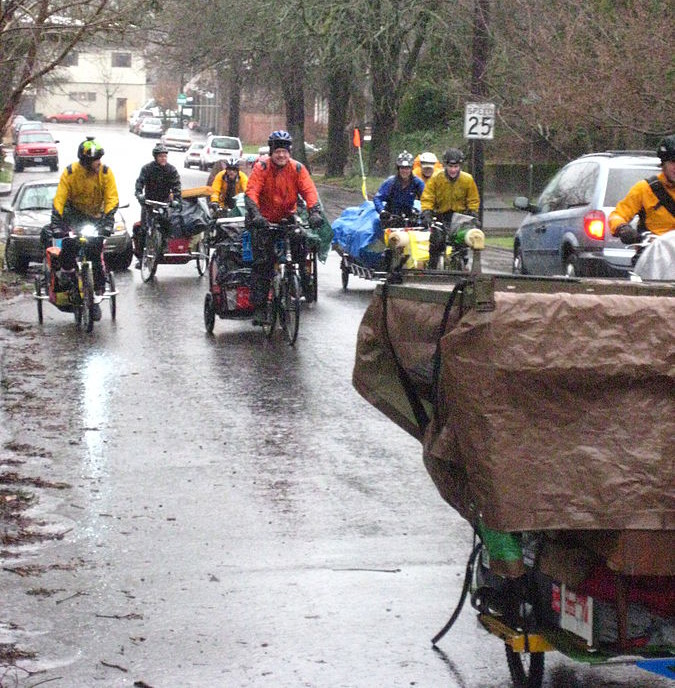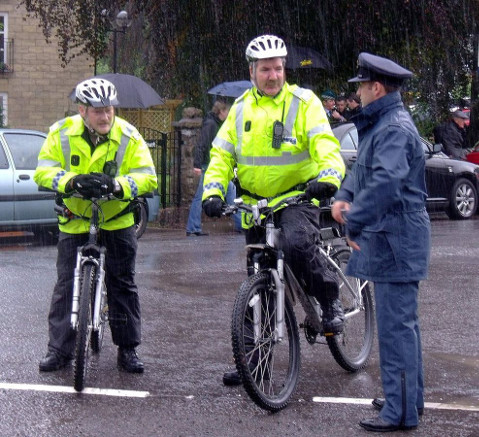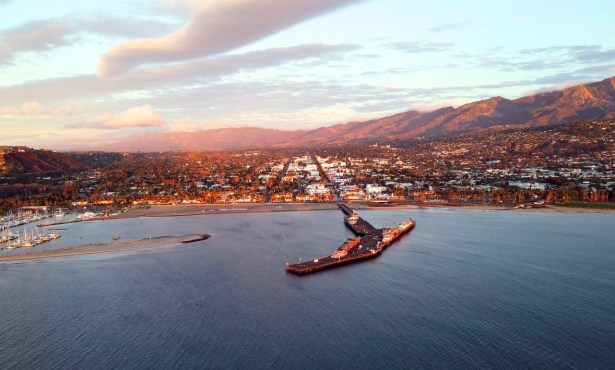Pedaling at Night and When It’s Wet
Being Invisible Isn't Always So Neat
When I was a teenager I used to deliver newspapers on my blue Schwinn Speedster. I’d ride out early every morning, and in the winter it was cold, wet, and dark. I didn’t have a light. A few lucky kids had cool generator-driven or D-cell battery chrome headlights. We rode in the dark without fear. We were kids.
When I wasn’t riding my blue Schwinn, I was enthralled with our first portable black-and-white TV. My favorite TV show was The Invisible Man. I loved the episode where, after his bag of scientific documents is stolen, the Invisible Man is held prisoner by the thief. This evil man wants him to commit a murder. The Invisible Man discovers that while his invisibility is a defense against detection from humans, it won’t protect him against a vicious guard dog that is trained to hunt him down if he attempts to escape. Wow!
That is also good advice it turns out for nighttime bicycle riders. You may feel hipster because you’re wearing dark clothes and riding without lights. But guess what, by being invisible you won’t be safe from motorists. Be visible!
I’ve written Pedal On columns in the past about selecting the appropriate front and rear bike lights based on where and how you ride. If you want my thoughts on best lights check out Pedaling with Illumination or The Illuminated Cyclist. But now I want to focus on tips for riding safely at night and also, since it’s the start of the rainy season, how to ride when roads are wet.
If you use your bicycle for commuting or pleasure, sooner or later you’ll find that you have to ride at night or in the rain. Statistics show that it is more dangerous to ride under these conditions; they also show that the overall crash rate for bicyclists who ride regardless of weather is lower than that for bicyclists who ride only on fine days Skill and correct equipment increase the ability to pedal safely with confidence.
If you ride at night, you need lights. Even downtown where streetlights show you the way, you need lights so motorists can see you against the glare of car headlights. If you ride at night, buy a quality, white headlight for your bike. A lot of new bikes are sold with a front reflector, which is not sufficient. A rear reflector or a red blinky is just as important so that you are visible to approaching cars.
When I’m riding at night in downtown Santa Barbara, I’ll chose a route that avoids streets without streetlights or crazy intersections like the Chapala or Mission Street underpasses. There are lots of routes that will minimize the risk of accidents, so choose residential and business streets with a reasonable, not heavy, amount of traffic.
If you’re going to be cycling in rural Goleta or the foothills at night, it’s important to have the right equipment and riding technique. Narrow, rural roads with moderate to heavy traffic have a bad record for nighttime bicycle crashes. Though fewer cars may be on the roads at night, a much larger percentage are driven by drunk drivers. Make sure you have a powerful front light that is bright enough to allow you to ride downhill at full speed on an unlighted road. Stay within the limitations of your lights. Rear lights and a reflective vest are a must.

It doesn’t rain a lot in Santa Barbara. If we were living in Seattle or Portland, we’d pay a lot more attention to the intricacies of hi-tech rain gear. I’ve learned that biking in liquid sunshine is more fun than freezing in snow. If you are not prepared, riding in wet weather can be miserable. If you equip yourself well, you can stay dry and comfortable.
If you are commuting a very short distance, a raincoat from the coat rack or a poncho with a hood may do the trick. Long raincoats and ponchos can be a danger on a longer ride since they can tangle with the spokes or frame. A hood can be dangerous, because it can block your view when you turn your head. (See more here.)
If you are going to be riding any distance in the rain, a good quality reflective yellow or orange rain parka is required. For longer rides in serious moisture, hi-tech Gore-Tex rain suits (parka and pants) or other materials that “breathe” are a must if you want to stay dry and comfy. Make sure that they are equipped with air holes to allow for cooling and ventilation. Many have reflective stripes to enhance your visibility. Booties to keep your shoes dry are also a nice addition, and dry feet will make longer rides more comfortable.

Your riding technique needs some modification in wet weather. Brakes won’t stop you as quickly. So ride slower, and plan your stops in advance. Applying your brakes slowly will help to wipe the rims dry well before you need to stop. Disc brakes improve wet-weather braking. If you’ll be out in the rain a lot, front and rear fenders will keep road dirt off you and your bicycle.
When you’re riding in the rain, pay special attention to metal surfaces such as manhole covers or steel-grid bridge decks, painted traffic markings, wet leaves, and oil slicks. They’re all especially slippery. In Santa Barbara, the first rains of the season leave roads quite slippery as oil and grease on the road mixes with water. Avoid riding through puddles if you can’t see the bottom — a puddle can hide a pothole. When you get home, it’s a good idea to dry off your bike and relubricate the chain to help prevent rust.
Riding in the rain and at night isn’t always enjoyable, but it should be safe with the right equipment and biking skills. The Wicked Witch in The Wizard of Oz may melt in the rain, but I won’t and neither will you. Before it rains again, take the time to learn how to pedal safely with lights and rain gear.


